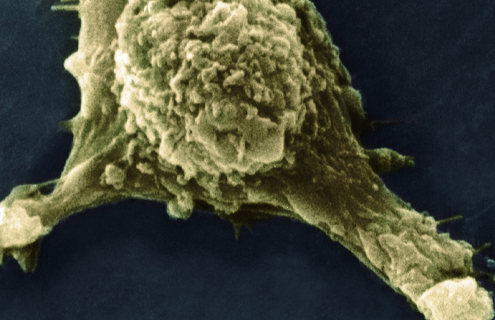
Clinically relevant cell models are critical for studies of molecular and cellular mechanisms of tumors, as well as for drug screening for cancer. With genome editing tools such as CRISPR/Cas9, ATCC has created isogenic cell lines with mutants of key oncogenes, which are ideal for elucidating molecular pathways of cancer progression.
ATCC isogenic cells are:
- Precisely gene-edited
- Engineered on relevant tumor cell lines
- Highly relevant to diseases and drug targets
- Validated at genomic, transcript, and protein levels
- Functionally characterized with specific inhibitors
- Well suited for drug screening applications
ATCC has mastered the science and art of CRISPR gene editing. We take highly authenticated cell lines from our collection and introduce the disease-relevant mutations using single guide RNAs (sgRNAs) that are designed to guide Cas9 to the targeted regions. The parental cell lines are cotransfected with sgRNA and Cas9. The transfected cells are sorted into single cells and expanded for testing. The gene-edited isogenic cell clones are then rigorously screened.
At ATCC, we created an isogenic cell line to model cancer patients with the EML4-ALK fusion oncogene, a key oncogenic driver, and then tested for its sensitivity to known selective inhibitors of ALK. Read our Application Note on EML4-ALK Fusion NSCLC Isogenic Cells.
Start your drug screening studies with new isogenic cell lines!
Isogenic cells for drug discovery

Study of CRISPR/Cas9-generated Isogenic Drug-resistant Melanoma Models
In this study, “Assessment of RAS-RAF-MAPK Pathway Perturbations and PD-L1 Expression in an Isogenic 3D Tissue-Culture Model of Drug-Resistant Melanoma,” we use the CRISPR/Cas9 system to generate isogenic drug-resistant melanoma models. These models can be used as either 2D or 3D cancer models or used in studies designed to further our understanding of the mechanisms of acquired drug resistance.
Get the Data
CRISPR/Cas9-engineered Cancer Models: The Next Step Forward for Targeted Cancer Therapy
ATCC has developed t CRISPR/Cas9 genome-editing capabilities for the development of custom-engineered, biomarker-specific human cancer models. By using CRISPR-based genome engineering to make precise changes to the genome of a target cell line, we can now alter those lines in a way that closely mimics the spontaneous development of cancer in a healthy tissue or specific cancer genotypes found in clinical patient samples.
Learn MoreLearn why isogenic cell models created by CRISPR gene editing improve drug discovery
CRISPR Toolbox Cell Lines
Researchers developing their own in vitro models via CRISPR genome-editing technology lack ready-to-use tools to quickly and accurately generate their cell of interest. The do-it-yourselfer must introduce the Cas9 enzyme and then validate its functionality before generating a gene-edited cell line. ATCC now provides researchers an efficient toolbox to accomplish their research needs: stable cell lines that constitutively express the CRISPR Cas9 nuclease. These out-of-the-box cell lines enable researchers to carry out CRISPR genome editing and CRISPR interference (CRISPRi) applications with high efficiency, thereby simplifying the genome-editing workflow and getting you closer to data acquisition. Learn more about CRISPR toolbox cell lines.
